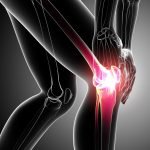Vitamin B12: More is Not Better
Primum Non Nocere
Jacob Schor, ND, FABNO
Vitamin B12 may not be as safe as we once thought. Our routine of injecting vitamin B12 indiscriminately into anyone who wants more energy just might not be the great idea that many of us think it is. That’s the thought that keeps arising in the back of my mind ever since reading a colleague’s offer to sell patients “B12 gift packages” to share with friends and family.
There has been a long-standing and widespread belief that B12 is completely safe and that there is no harm in raising B12 in the body to high levels. Believing this, we have happily injected B12 into a range of patients – and in high doses – to see if it would help. This is a classic example of our practice refrain, “It won’t hurt, but it might help” that many of us routinely fall back on. And it does seem to help now and then. There is a widespread belief that vitamin B12 acts as a pick-me-up, providing an invigoration and an increase in energy that will sustain a patient for days, weeks, or even months. From time to time, it resolves odd neuropathies, and, of course, pernicious anemia. Vitamin B12 often works for that… at least when the cause is B12 deficiency. Sometimes it’s a deficiency of folic acid or folinic acid, but let’s not get stuck on the details.
Increased Fracture Risk?
This concern about B12 not being totally safe is brought to mind by a paper written by Harvard researchers and published in JAMA Network last year, which suggested the risk of hip fracture is worsened by vitamins B12 and B6.1 These researchers had seen hints of this in an earlier pair of randomized clinical trials. In this prospective cohort study, 75 864 women enrolled in the Nurses’ Health Study were followed from 1984 to 2014. These women were interrogated extensively about food and supplements. Cumulative intakes of vitamins B6 and B12 were used to calculate relative risk of hip fractures.
During this time period, 2304 of the 75 864 women experienced a hip fracture. Median age at fracture was 75.8 years. Average total intake of B6 was 3.6 mg/day, and average intake of B12 was 12.1 μg/day. This included intake from all sources, including food and nutritional supplements. Women who took in more than 35 mg/day of B6 had a 29% higher relative risk (RR) of having a hip fracture compared to women who had taken in less than 2 mg/day (RR, 1.29; 95% CI, 1.04-1.59). Women whose intake was more than 30 μg/day of B12 had a 25% higher risk of hip fracture than those whose intake was less than 5 μg/day. The risk of hip fracture was almost 50% higher in women who had high intakes of both vitamins (B6 ≥35 mg/d and B12 ≥20 μg/day) (RR, 1.47; 95% CI, 1.15-1.89).1
There is a “soft chew” product out there on store shelves that boasts a B12 energy blast of 2500 µg per serving. If 30 µg per day of B12 increased risk of hip fracture, what might repeated doses of 2500 µg do? This should give all of us pause, as many of the daily supplements our patients swallow far exceed these levels. Vitamin B12 injections typically contain 1000 μg each. Some doctors use versions that are twice this strength.
Over the years, we’ve certainly seen patients with high plasma B12 levels. More often than not, we assume that their levels have risen because they are taking high doses; and again, the traditional assumption is that this is fine. But sometimes patients’ B12 levels are high even without taking supplements. A concern about increased fracture risk should now be weighed against this.
Cancer Concerns
There is another concern that is less clearly defined, and which gives me even greater pause. Circulating levels of B12 in the blood tend to go up in some patients with cancer. A 2013 report, published by the National Cancer Institute, told us that high plasma B12 levels appear to be a marker for this disease.2
In compiling this report, Johan Arendt and several colleagues went through the Danish national medical registries and identified people with B12 levels above the lower reference limit (≥200 pmol/L) during the period of 1998 to 2009. They then obtained data on cancer incidence for these people from 1998 to 2010. Cancer risks were calculated as standardized incidence ratios (SIR). In total, they looked at 333 667 people who started out without cancer and who were not being treated with B12. Among these individuals, 6% had B12 levels above the reference range (≥601 pmol/L). Cancer risk increased in parallel with B12 levels. SIR more than tripled for people with moderately elevated B12 levels (601-800 pmol/L). For people with more elevated levels, incidence was increased more than 6-fold (>800 pmol/L: RR, 6.27; 95% CI, 5.70 to 6.88; both p<0.001).2
Thus, for patients diagnosed with cancer, discovering that they have high B12 levels is bad news. A second paper by Arendt and colleagues, published in 2016, informs us that high B12 levels in cancer patients are also associated with higher risk of mortality compared to patients with normal B12 levels.3 This study included 25 017 cancer patients, whose B12 levels had been measured up to a year prior to diagnosis. These patients were compared to just under 62 000 cancer patients whose B12 levels were unknown.
Those with moderately elevated B12 levels had a lower probability of 1-year survival (49.6%) compared to patients with normal levels (69.3%) or compared to the cohort with unknown levels (72.6%). The higher the B12 level, the lower the odds of survival. One-year survival was only 35.8% among those with serum B12 levels >800 pmol/L.3
This obviously doesn’t mean that high B12 killed these patients. These data just show us an association, but not causation. A plausible explanation is that “bad cancers” trigger the liver to release an abundance of B12 into the blood, and the worse the cancer is, the more B12 is released into circulation. But numbers like these should still give one pause. It is possible that B12 release is engineered by the cancer, as B12 is essential for rapidly growing cells to replicate their DNA and divide. Giving excessive doses of B12 to cancer patients could conceivably aid and abet tumor growth. Not what we want to do.
Note: US labs report B12 in ng/mL, not in these picomoles per liter numbers used in Denmark. Here are a few relevant conversions:
- 800 pmol/L = 1084 ng/mL
- 600 pmol/L = 813 ng/mL
- 200 pmol/L = 271 ng/mL
- Normal range for B12 is 200-900 ng/mL4
A Time and a Place
Now, don’t get me wrong. Vitamin B12 is useful for treating a broad range of conditions. In fact, as I write this, the Natural Medicine Journal is in the process of reviewing a study by Polytarchou et al that suggests that B12 might be useful in heart failure.5 So, like many things in life, there is a time and place where B12 can be useful. But, there are times when supplemental B12 might not be a good idea. Our assumption that B12 is always good and never bad is, in hindsight, myopic. Too little is an obvious problem. It’s looking like too much might also be a problem. Is that a surprise to anyone?
References:
- Meyer HE, Willett WC, Fung TT, et al. Association of High Intakes of Vitamins B6 and B12 From Food and Supplements With Risk of Hip Fracture Among Postmenopausal Women in the Nurses’ Health Study. JAMA Netw Open. 2019;2(5):e193591.
- Arendt JF, Pedersen L, Nexo E, Sørensen HT. Elevated plasma vitamin B12 levels as a marker for cancer: a population-based cohort study. J Natl Cancer Inst. 2013;105(23):1799-1805.
- Arendt JF, Farkas DK, Pedersen L, et al. Elevated plasma vitamin B12 levels and cancer prognosis: A population-based cohort study. Cancer Epidemiol. 2016;40:158-165.
- Medical News Today. What is the purpose of a vitamin B-12 level test? Reviewed January 15, 2020. Available at: https://www.medicalnewstoday.com/articles/322286.php. Accessed January 20, 2020.
- Polytarchou K, Dimitroglou Y, Varvarousis D, et al. Methylmalonic Acid and Vitamin B12 in Patients with Heart Failure. Hellenic J Cardiol. 2019 Nov 15. pii: S1109-9666(19)30286-6. pii: S1109-9666(19)30286-6. doi: 10.1016/j.hjc.2019.10.010. [Epub ahead of print]

Jacob Schor, ND, FABNO, graduated from NCNM in 1991 and has practiced in Denver, CO, ever since. He has been active in state association politics, taking his turn as president of the Colorado Association of Naturopathic Doctors and Legislative Chair. Dr Schor has also held leadership positions in the Oncology Association of Naturopathic Physicians, served on the AANP Board of Directors, and chaired the AANP’s speaker selection committee. For the past decade he has been the Associate Editor of the Natural Medicine Journal, and is a regular contributor to the Townsend Letter.









